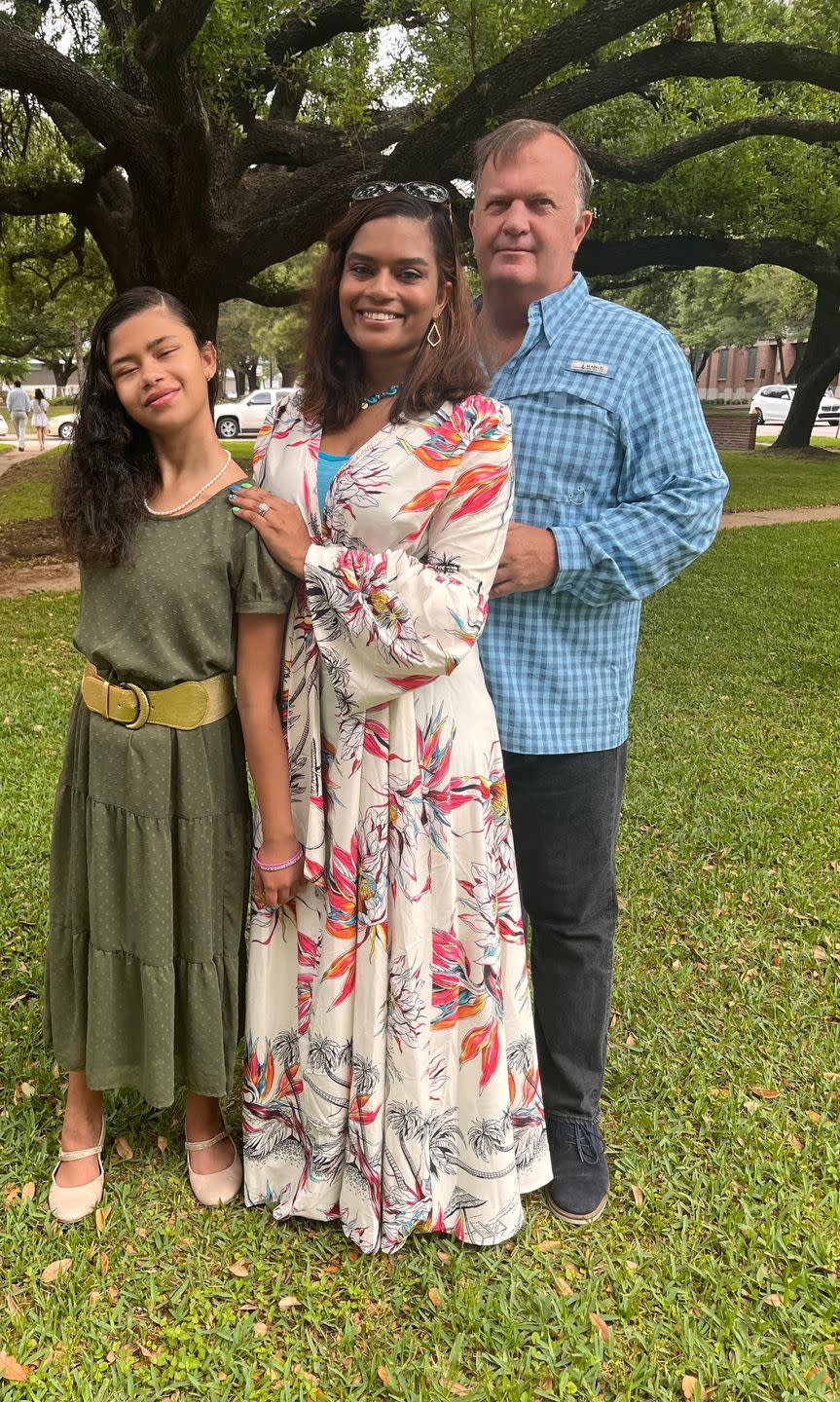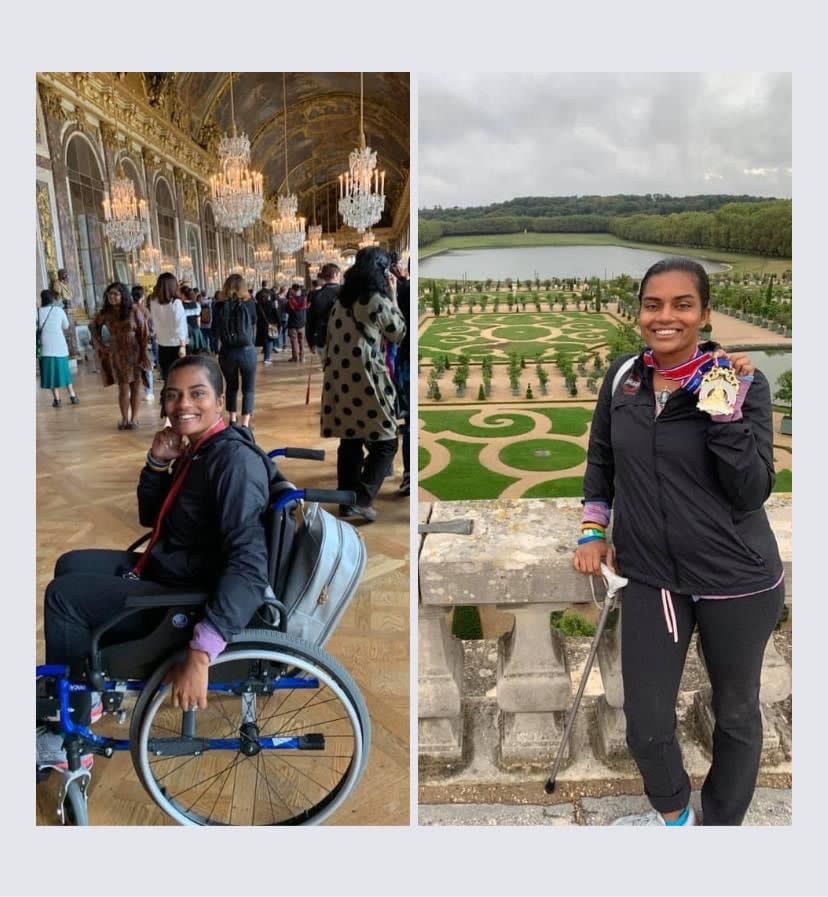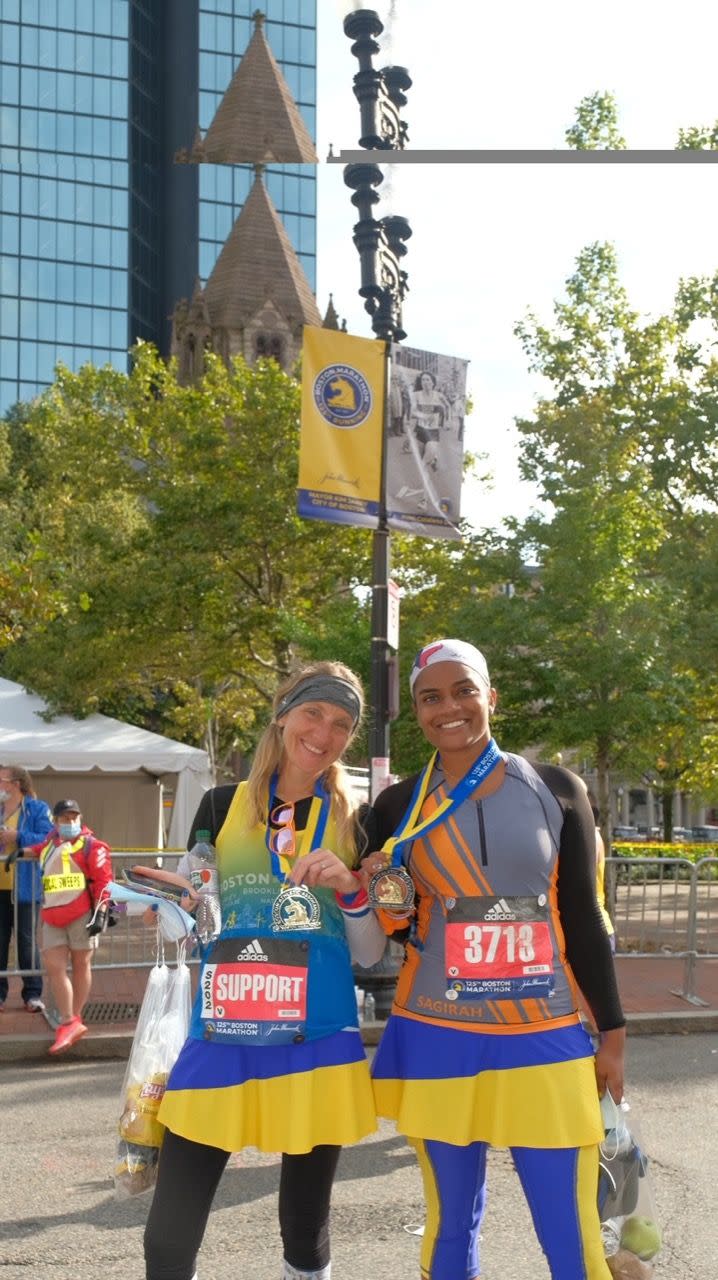'When My Multiple Sclerosis Impacted My Ability To Walk And Run, I Took Drastic Measures'

October 2017 was supposed to mark the culmination of my efforts to quit smoking and start running after my father passed away. All of my friends and family were there at the Chicago Marathon to cheer me on. But as I racked up miles, I started to feel...weird.
My legs went numb. I couldn’t pick up my feet the way I normally would. By mile 13, I was in a medical tent trying to figure out what was going on with me. It was devastating.
I’d trained for months and had run half-marathons before, so I couldn’t understand what was stopping me. I knew something was wrong and I had to listen to my body, but that meant I wasn’t going to be able to get the special moment I’d envisioned for so long.
As city crews cleared the streets, I walked to the finish line to receive my participation medal.
Back at home in Houston, I went to a sports physician thinking my problems had to be running-related.
They referred me to a neurologist. After a lot of tests, I was diagnosed with primary progressive multiple sclerosis (PPMS), a form of MS that causes a slow-and-steady decline in your ability to function due to damage from a haywire immune system’s attacks on myelin (protective nerve cells).
Compared to relapsing forms of MS—which are more likely to attack the brain—people with PPMS primarily experience assaults on their spinal cord. In turn, we tend to have a harder time with walking and everyday activities.
It was a relief to get a diagnosis, but I struggled to understand how I could go from training for a marathon to being told I’d be wheelchair-dependent within five years.
I thought about my husband, Joe, our 10-year-old daughter, Ana. I was busy. At 29, I had a lot of things to do, and I wasn’t sure where this whole MS thing was going to fit into my life. I made a vow to tackle my bucket list right away, most of which involved travel.
It was on a personal trip to Ireland with my husband in April 2019 that I discovered a promising experimental treatment for MS still under investigation in the United States.
The moment we landed, we saw that the U.K. was having a race for MS awareness that weekend.
I looked at my husband and he was like, "Of course there’d be a race." I knew I had to sign up.
After I picked up my race packet, I began flipping through a magazine with information on MS treatment. They matter-of-factly mentioned HSCT as a potential treatment option. I’d never heard of it.
As I learned, HSCT (which stands for hematopoietic stem cell transplant) is a procedure designed to “reset” your immune system using chemotherapy to wipe it out and your own stem cells to rebuild it from scratch. The goal’s to stop MS at the source in the hopes that your body’s new immune system will no longer attack your nervous system. Emerging studies suggest that, for some people, it seems to work.
At first, I assumed an intensive treatment like this didn’t really apply to me yet. I had some numbness, my foot dragged a little (a symptom known as “foot drop”), and sometimes I had tremors. But I didn’t have *serious* MS symptoms.

Still, I kept thinking about it. When we returned to the U.S., I decided to keep researching my options. At the time, I didn’t know a lot about the disease I was living with and just did whatever my doctors told me to do. I was taking the only FDA-approved medication available for people with PPMS. Getting the IV drip every six months didn’t bother me. But the “crap gap,” or a very brief period of time when the medication started to wear off before the next infusion, was tough. I could feel everything—the foot drops, tingling, and sharp pains zipping down the front of my body.
This was when I started to realize what it meant for me that my medication was designed to slow the progression of MS—but it wasn’t going to stop it. Stopping something that was going to drive me into a wheelchair had to be better than slowing it down.
At my next appointment, I asked my doctor about HSCT. He told me there were clinics opening as a part of the National MS Society’s BEAT-MS trial, and he’d let me know when they were available. We left it at that.
As the months passed, I began to lose my ability to run. By September of 2019, I needed a cane to walk every day and had to use a brace to do a slow jog-walk. Waiting for that trial wasn’t going to be good enough for me.
I was on my way to run what I thought would be my last half-marathon at Disneyland in Paris when it hit me that I had to do something about my health—and fast.
Seeing my husband struggle with this wheelchair that my doctor suggested we take on the trip, I thought, This can’t be us. This isn’t going to work. We have to find something else. And if it’s not available in the US yet, where were those other clinics? By the time we were flying back from Paris, I’d already sent an inquiry to a clinic in Mexico to ask how soon they could get me in.

Before I left, my doctor and I talked about potential risks of the procedure and next steps.
When I let my doctor know about my plan to go to Mexico for treatment, he warned me there were a lot of fake treatments and hoaxes out there (it’s important for anyone considering this route to stick with a clinic from a list of accredited facilities). I also had to consider some serious risks, including susceptibility to more severe infections and—in about 1 out of 330 cases—death (though the risk is higher for older patients).
As I reviewed my options further, I learned that I wouldn’t have qualified for the BEAT-MS trial when it started anyway. The few spots available were reserved for people with very specific cases of relapsing MS because their success rate was higher than for those with my form of the disease. As one review found, over 65 percent of people who received HSCT experienced no worsening symptoms of MS 10 years after the procedure, but the vast majority of them had some form of relapsing MS. According to the National MS Society, it’s likely that the best contenders for HSCT have very aggressive relapsing forms of MS, can’t use these disease-modifying therapies, or are younger than 50 and have had the disease for less than ten years.
Despite the unknowns, I knew I had to give this a shot. I wasn’t going down without a fight. If it didn’t work, at least I’d know I’d tried everything I could possibly try.
In January 2020, my husband and I took off for our "medical vacation."
The facilities were beautiful, meals and a full-time nurse were included, and I was given an iPhone the moment I walked in for a 24/7 connection with the five doctors who were on staff for the entire 30-day process. My husband and I stayed in a two-bedroom apartment and I started chemotherapy, the first phase of treatment, a few days in. They guided me through every step of the way.
While I felt amazingly well-informed and supported, there were difficult times. I knew I was going to lose my hair from chemotherapy, so I’d shaved my head before we left. I threw up more than I ever thought I could. I also had to spend two weeks in complete isolation as my immune system was redeveloping. Most of that time I spent watching Netflix. Some days, I could feel the pain in my bones, and my medical team warned me recovery could be a roller coaster.
At the same time, I felt an immense amount of relief as many of my MS symptoms disappeared. For the first time, my foot didn’t drag. For the first time, I wasn’t shaking as I tried to zip up a zipper. Day by day, I could feel my old self coming back. I’d put so much effort into getting here. When I walked out of the treatment center without my cane, I knew the whole journey had been worth it.

With intensive physical therapy, I was able to walk and run again within nine months.
In the U.S., my medical team followed my recovery closely. A few weeks after my return, COVID-19 hit, but I was able to start and continue intensive physical therapy virtually and in-person in open spaces. I re-learned how to walk properly and eventually felt comfortable trying to run again.
Four years after my first marathon attempt, in October 2021, I ran the Boston Marathon. It was a life-changing experience. At mile 20, I hit a wall and had to walk to the finish line again. But I was comfortable knowing people had seen my message—and that was what I was really there for. I was there to inspire people with MS. It wasn’t about running anymore. It was about people who didn’t have the option to run and what they might learn from my story.

Since finishing HSCT, I have never needed another dose of MS medication. I very rarely experience tremors, but they’re nothing like before. I work hard with my physical therapist so that if I feel even a tinge of discomfort, we figure out how to work those muscles so I don’t fall into bad habits.
My takeaway from this journey is that you have to be your own health advocate.
I stumbled across HSCT. I was in the right place at the right time in the right race in the right country. But it shouldn’t have been so hard to find this information, and I believe patients should know about all of their options. When you’re living with chronic illness, you have trust your doctors and respect their expertise. But you also need to speak up, research every possibility, and find the path that works for you—even if it’s the least expected.
I’m happy to say that I’m much stronger now. I’m living my best little life, and it’s all because I decided I wanted to keep moving forward and see what I could do.
You Might Also Like

